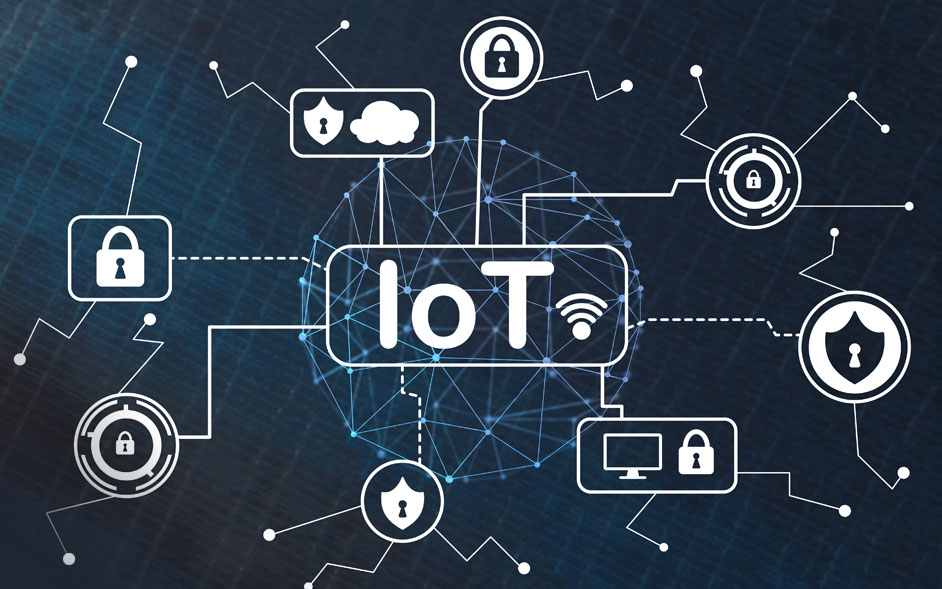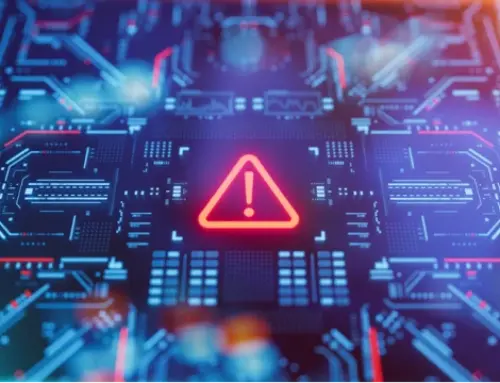
IoT Security Gets Serious Understanding The Cyber Trust Mark Mandate.
IoT Security: Internet of Things, Cyber Trust Mark Mandate, and IoT Cybersecurity Gets Serious Understanding
In today’s hyper-connected world, the Internet of Things (IoT) represents a paradigm shift, revolutionizing how we interact with the digital landscape. As more devices integrate into the IoT ecosystem, ensuring robust cybersecurity, as outlined in the cybersecurity act, becomes imperative. This article delves into the intricacies of IoT security, highlighting the significance of cybersecurity measures, the role of the Cyber Trust Mark, and the evolving landscape of IoT cybersecurity.
Introduction to IoT Security
The Internet of Things is a burgeoning network of interconnected devices, or IoT devices, that communicate and exchange data, enhancing various facets of our daily lives. From consumer IoT products to complex industrial IoT systems, these connected devices are integral to modern convenience and efficiency. However, with this interconnectivity comes an increased vulnerability to cyber threats, necessitating a focus on IoT security.
Overview of the Internet of Things
IoT encompasses a vast array of smart devices that are embedded with sensors, software, and other technologies to connect and exchange data with other devices and systems over the Internet. This includes everything from smart home appliances to sophisticated industrial machinery. The proliferation of IoT products underscores the need for stringent cybersecurity standards to protect information security and maintain the integrity of these networks.
Importance of Cybersecurity in IoT
As IoT devices proliferate, so do the potential security threats that can compromise the safety and privacy of data. Cybersecurity in IoT is pivotal To safeguarding the integrity of networks, ensuring that consumer IoT devices and industrial systems alike are shielded from cyber attacks, security management is key. The implementation of security standards and cybersecurity frameworks, as outlined in the cybersecurity act, is crucial to fortify IoT ecosystems against these threats.
Key Security Threats in IoT
The interconnected nature of IoT devices introduces various security challenges, including unauthorized access, data breaches, and the exploitation of security vulnerabilities. These threats can have significant repercussions, from personal data exposure in consumer IoT devices to operational disruptions in critical infrastructure. Consequently, adopting robust security measures Continuous security updates, as mandated by the cyber resilience act, are essential to mitigate cybersecurity risks and ensure the reliability of IoT systems.
Understanding the Cyber Trust Mark
What is the Cyber Trust Mark?
The Cyber Trust Mark is an innovative cybersecurity labeling program designed to provide assurance of robust security measures for IoT devices. By assigning this mark, the program signals that a connected device meets stringent cybersecurity standards and practices. This initiative aims to enhance information security, ensuring that consumer IoT products and industrial IoT systems are equipped with essential security features to withstand cyber threats.
Purpose and Benefits of the Cyber Trust Mark Program
The Cyber Trust Mark program is pivotal in promoting cybersecurity awareness among consumers and manufacturers alike. By mandating compliance with established security standards, it fosters a culture of security and privacy within the IoT ecosystem. The program underscores the importance of secure IoT by guiding consumer choices towards safer products, thereby minimizing cybersecurity risks and enhancing the overall security of IoT systems.
US Cyber Trust Mark: Implementation and Impact
In the United States, the implementation of the Cyber Trust Mark has been a collaborative effort involving key industry players and regulatory bodies. This labeling program strengthens IoT security by setting a benchmark for cybersecurity certification and practices, ensuring adherence to security regulations. The impact is significant, as it not only boosts consumer confidence in IoT devices but also propels manufacturers to prioritize cybersecurity resilience, ultimately fortifying IoT ecosystems nationwide.
Security Standards for IoT Devices
Current IoT Security Standards
Currently, IoT security standards are guided by frameworks established by leading institutions like the National Institute of Standards and Technology. These standards focus on essential security requirements to mitigate cybersecurity risks. By adhering to these guidelines and cybersecurity criteria, manufacturers can ensure that their IoT devices offer enhanced security assurance. strong protection against potential cybersecurity threats while maintaining the integrity of information security.
| Security Requirement | Description of security practices is necessary to understand the importance of cybersecurity in modern technology. |
|---|---|
| Authentication | Ensures only authorized devices and users can access the system. |
| Data Encryption | Protects data from being intercepted and read by unauthorized parties. |
| Regular Security Updates | Helps in safeguarding against new and evolving threats. |
2024 Trends in IoT Security Standards
As we look towards 2024, IoT security standards are expected to evolve, incorporating advanced cybersecurity measures to address emerging security challenges. The anticipated trends include greater emphasis on device-level security features, enhanced interoperability standards, and increased reliance on AI-driven security solutions to meet evolving security regulations. These advancements ensure that IoT products remain resilient against sophisticated cyber threats, ultimately safeguarding consumer IoT devices and critical infrastructure systems.
Compliance and Cybersecurity Requirements
Compliance with cybersecurity requirements is crucial for manufacturers aiming to achieve the Cyber Trust Mark. Teamwin Global Technologica provides solutions that facilitate adherence to these requirements, offering managed security services and security compliance assistance. By ensuring compliance, companies can fortify their product security and maintain consumer trust. This proactive approach not only mitigates security vulnerabilities but also enhances the overall cybersecurity framework of IoT ecosystems, aligning with established cybersecurity criteria.
Challenges in IoT Cybersecurity
Identifying Security Challenges in IoT Ecosystem
The IoT ecosystem presents a unique set of cybersecurity challenges due to the sheer volume and diversity of connected devices. Identifying these challenges is crucial to safeguarding both consumer IoT products and large-scale industrial systems. Security risks arise from vulnerabilities inherent in the software and hardware of IoT devices, necessitating robust cybersecurity standards. Cyber threats exploit these weaknesses, compromising data integrity and privacy, and potentially disrupting operations.
Addressing Vulnerabilities in Connected Devices
Addressing vulnerabilities in connected devices is paramount for maintaining the security of IoT ecosystems. IoT device security requires ongoing assessments and updates to counteract emerging cyber threats. Implementing rigorous security measures, such as regular security updates and adherence to cybersecurity requirements, enhances the resilience of these devices. By prioritizing product security, manufacturers can mitigate cybersecurity risks and ensure the stability and reliability of IoT systems, strengthening their security posture.
Strategies for Enhancing Cyber Resilience
Enhancing cyber resilience within the IoT framework involves adopting proactive strategies that anticipate and mitigate security threats. These strategies include:
| Strategy | Description |
|---|---|
| Implementing Advanced Security Features | Ensures robust protection against potential breaches, thereby enhancing overall security assurance. |
| Continuous Monitoring and Swift Response Protocols | Allows for the quick identification and mitigation of threats. |
A robust cybersecurity framework, supported by the Cyber Trust Mark, provides assurance of secure IoT practices. By fortifying defenses against cyber threats, organizations can safeguard information security and maintain the integrity of connected devices.
Implementing IoT Device Security
Best Practices for IoT Device Security
Implementing best practices for IoT device security is essential for protecting against cybersecurity risks. These practices include:
| Practice | Details |
|---|---|
| Authentication | Ensuring strong authentication mechanisms is a fundamental aspect of a comprehensive security system. |
| Data Encryption | Encrypting data transmissions |
| Software Updates | Regularly updating device software to address security vulnerabilities |
By adhering to established security standards, such as those outlined by the National Institute of Standards and Technology, organizations can bolster the security and privacy of their IoT products, enhancing overall cybersecurity resilience.
Application Security for IoT Products
Application security for IoT products is a critical component of a comprehensive cybersecurity strategy. Ensuring that applications running on IoT devices are secure involves rigorous testing for vulnerabilities, implementing secure coding practices, and deploying security updates promptly. By focusing on application security, organizations can prevent unauthorized access and data breaches, thereby maintaining trust in their consumer IoT devices and safeguarding sensitive information.
Network Security Solutions for IoT
Network security solutions are vital for protecting the integrity and confidentiality of data within IoT systems, contributing to a strong security posture. Teamwin Global Technologica offers secure networking solutions that include both passive and active networking capabilities, ensuring compliance with security regulations. These solutions are designed to enhance operational efficiency while maintaining robust security. Structured cabling, a foundational component of IT infrastructure, ensures reliable connectivity and security, empowering organizations to protect their IoT ecosystems against cyber threats.
What is the importance of cybersecurity in the IoT environment?
Cybersecurity is crucial in the IoT environment as it helps protect connected devices from various security threats. With many IoT devices being vulnerable to attacks, implementing strong cybersecurity measures ensures the privacy and security of users while maintaining the integrity of the IoT solutions deployed.
How does the Cyber Trust Mark program enhance IoT device security?
The Cyber Trust Mark program sets security standards that IoT device manufacturers must meet to demonstrate their commitment to cybersecurity. By adhering to these standards, manufacturers can enhance the security of their products, ensuring that vulnerable IoT devices are better protected against cyber threats.
What role do cybersecurity experts play in enhancing the security of IoT devices?
Cybersecurity experts are vital in assessing and improving the cybersecurity posture of IoT devices. They provide insights on best practices, implement security policies, and help organizations address cybersecurity challenges within their IoT systems, thereby enhancing the overall security of the IoT environment.
What is the IoT Cybersecurity Improvement Act of 2020?
The IoT Cybersecurity Improvement Act of 2020 mandates the establishment of security requirements and guidelines for IoT devices used by the federal government. This act aims to improve the baseline cybersecurity of IoT products and promote the development of secure IoT solutions across the market.
How can businesses prioritize security in their IoT deployments?
Businesses can prioritize security in their IoT deployments by implementing comprehensive security solutions, regularly updating device security, and adhering to recognized cybersecurity certification frameworks. Establishing a culture of cybersecurity awareness among employees also plays a critical role in mitigating risks.
What are the security challenges associated with the IoT ecosystem?
The IoT ecosystem faces various security challenges, including the proliferation of vulnerable IoT devices, inadequate security measures, and the complexity of network security. Addressing these challenges requires a coordinated effort among IoT vendors, device manufacturers, and cybersecurity experts to strengthen the security landscape.
What is the significance of the Cybersecurity Act concerning IoT technology?
The Cybersecurity Act emphasizes the need for robust cybersecurity measures across all technologies, including IoT. It aims to enhance cybersecurity protocols, promote information sharing among stakeholders, and ensure that IoT technologies are developed with adequate security in mind, thereby fostering a more secure digital environment.
How can consumers ensure the security of their IoT devices?
Consumers can ensure the security of their IoT devices by researching product security before making a purchase, regularly updating device firmware, enabling security features, and being vigilant about privacy settings. Understanding the security standards that products adhere to is also crucial for making informed choices.






